A very delicious and old cooking technique is fricassee (French: “fricassée”). A related method is the “blanquette”.
In both cases, we are talking about dishes with a light, bound sauce, traditionally as a ragout with meat. But there is no reason at all not to prepare a vegetarian fricassee or blanquette. Only for a vegan version would you have to get a little inventive. If you want to prepare a vegetarian fricassee, leave out the chicken, use vegetable stock instead of chicken stock and complement it with the vegetables of your choice.
For a fricassee, the meat is gently sautéed in butter and a roux-based sauce is cooked. For a blanquette, the meat is gently poached, i.e. cooked in liquid over a low heat. The sauce is then bound through a liaison, as we have done here, for example.
The most popular fricassee these days is probably chicken fricassee, and it is also our favourite version. However, we find that it turns out even better as a mixture of both cooking techniques.
We need chicken breast fillet of the best quality, some carrots and peas, mushrooms, an onion and a lemon, and parsley. For the chicken fricassee we prefer curly parsley over flat parsley, but that’s a matter of taste. The season for fresh peas is short, but frozen peas are perfectly fine – just please do not buy canned peas.
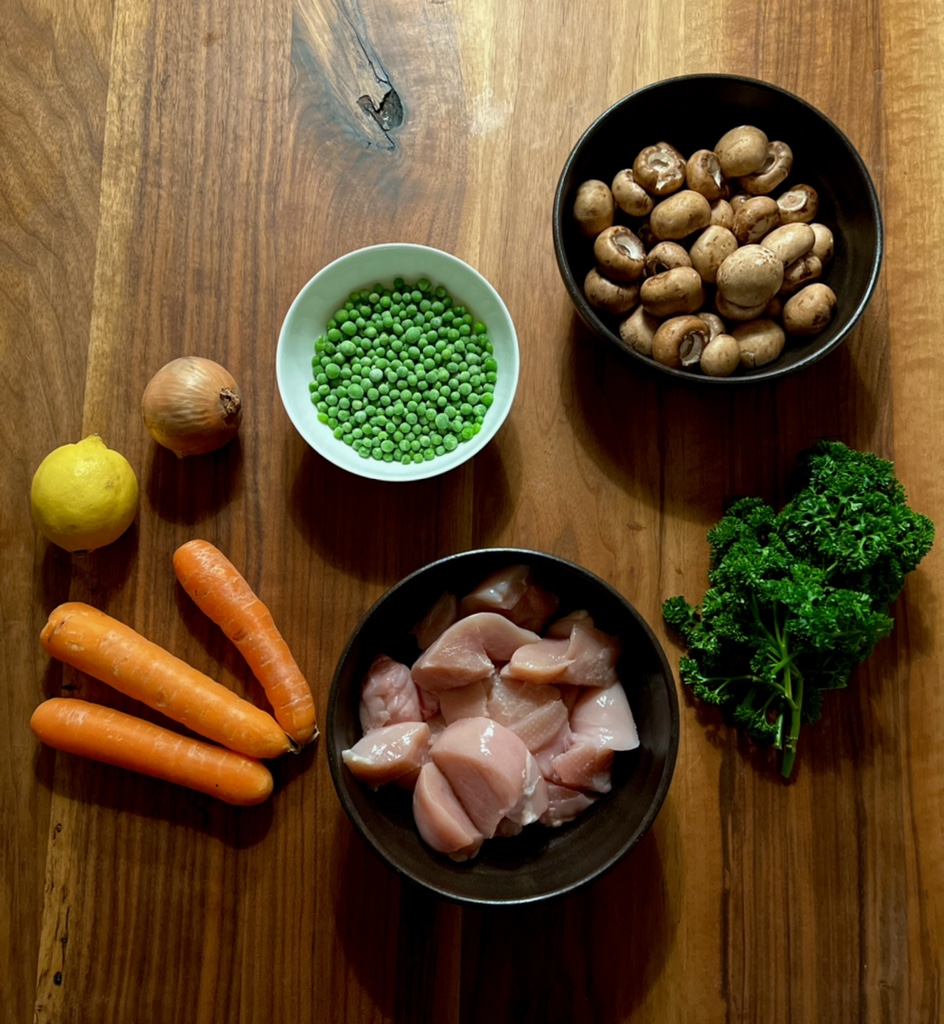
Cloves and bay leaf are indispensable for the typical taste, both are really very important.
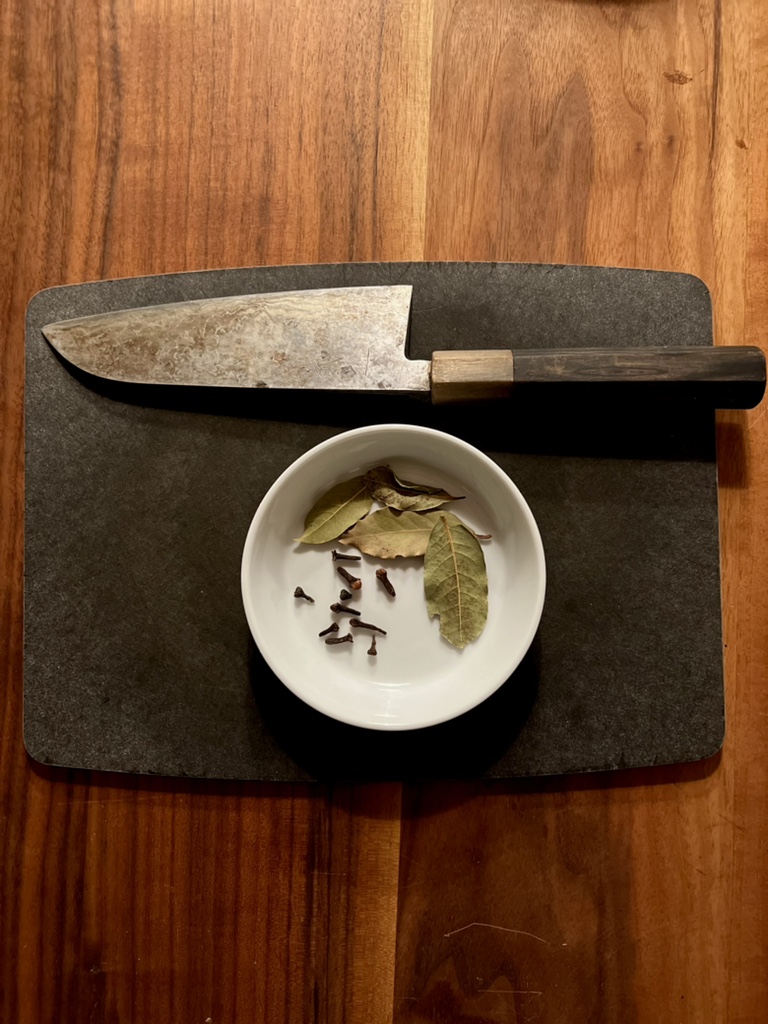
Peel the onion and cut it in half, then lightly score the halves in the middle with a knife. Now insert the bay leaves into these slits and press the cloves into the onion halves, tip first. This way you can easily remove the cooked onions and spices later without having to sieve the broth.

You could now put on a pot of lightly salted water – but we recommend a chicken stock, which will make your dish even more flavourful in the end.
Add the onions with the spices. Let the whole thing simmer gently for 10 minutes.
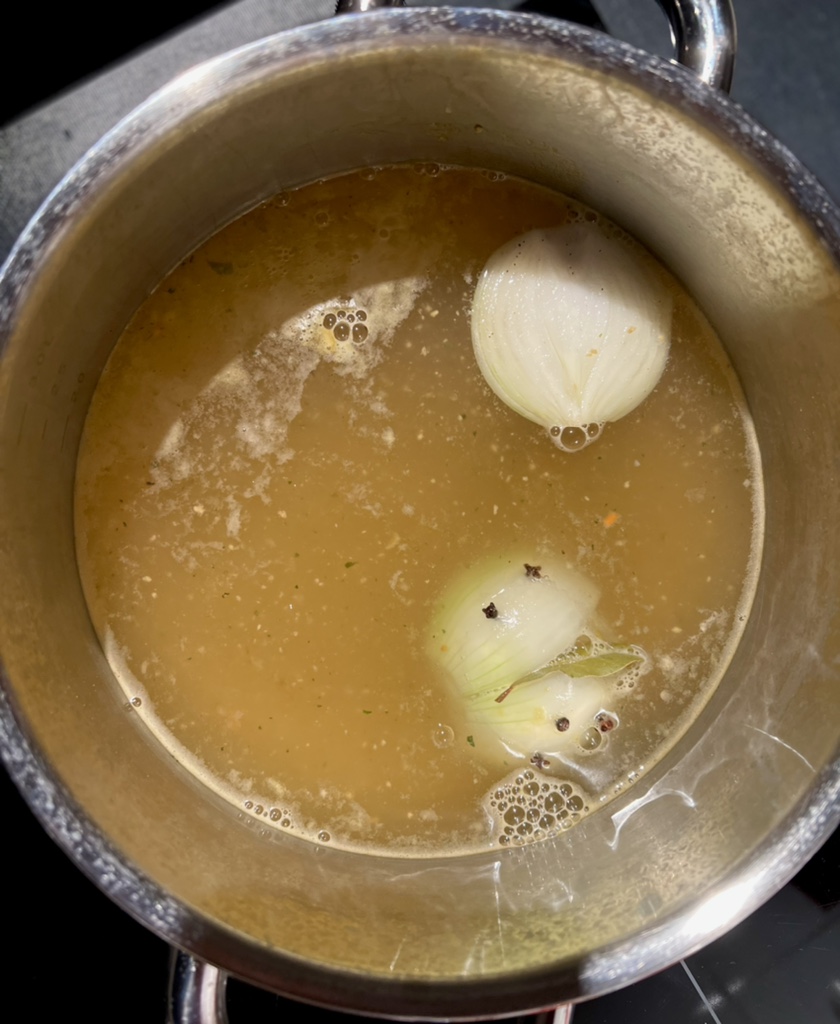
Now we add the breast fillets. Normally we put them in whole, but today, for some reason, the butcher had already decided to cut up his best fillets.
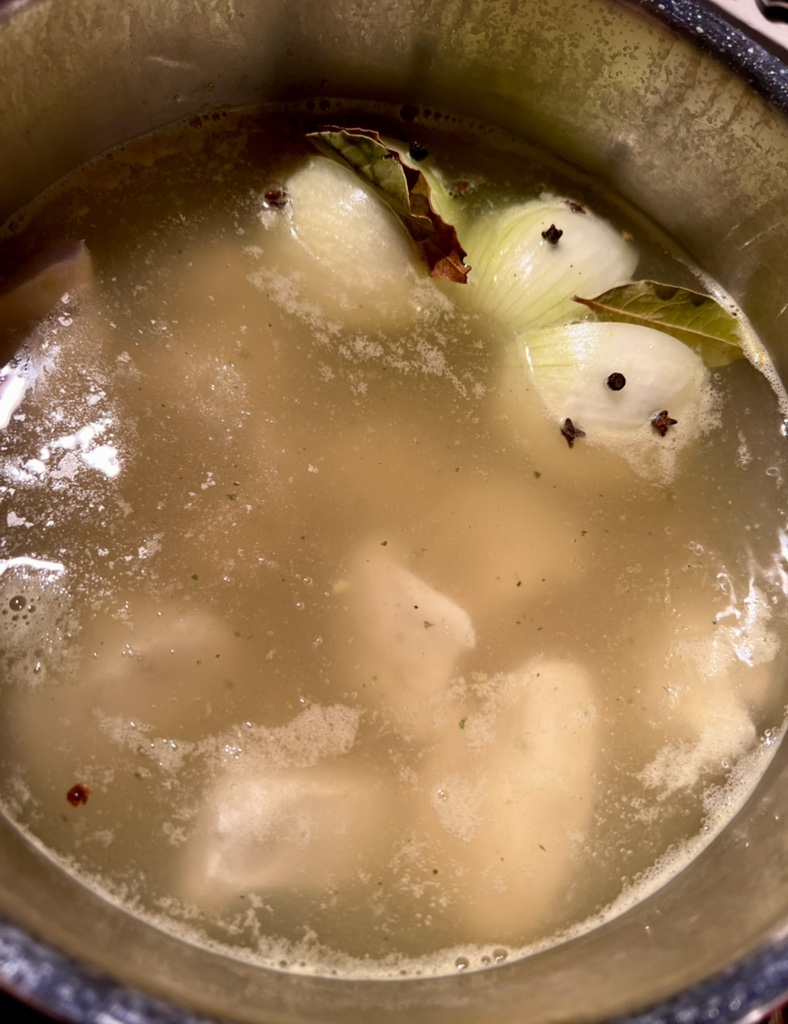
The chicken is not boiled, the liquid should not bubble. Instead, the meat should be gently and slowly simmered. The whole fillet takes about 14 minutes, our pieces were cooked in less than 10 minutes. Turn the whole fillet a few times and check after 10 minutes by scoring the meat with a knife. It should have just turned white inside, then it is done.
While poaching, we can prepare the other ingredients.
We replace the roux with kneaded butter (“beurre manié”). This gives us much more control over the consistency of our finished dish, but we’ll get to that later.
To make the kneaded butter, we mix equal parts of room-warm butter with ordinary flour….
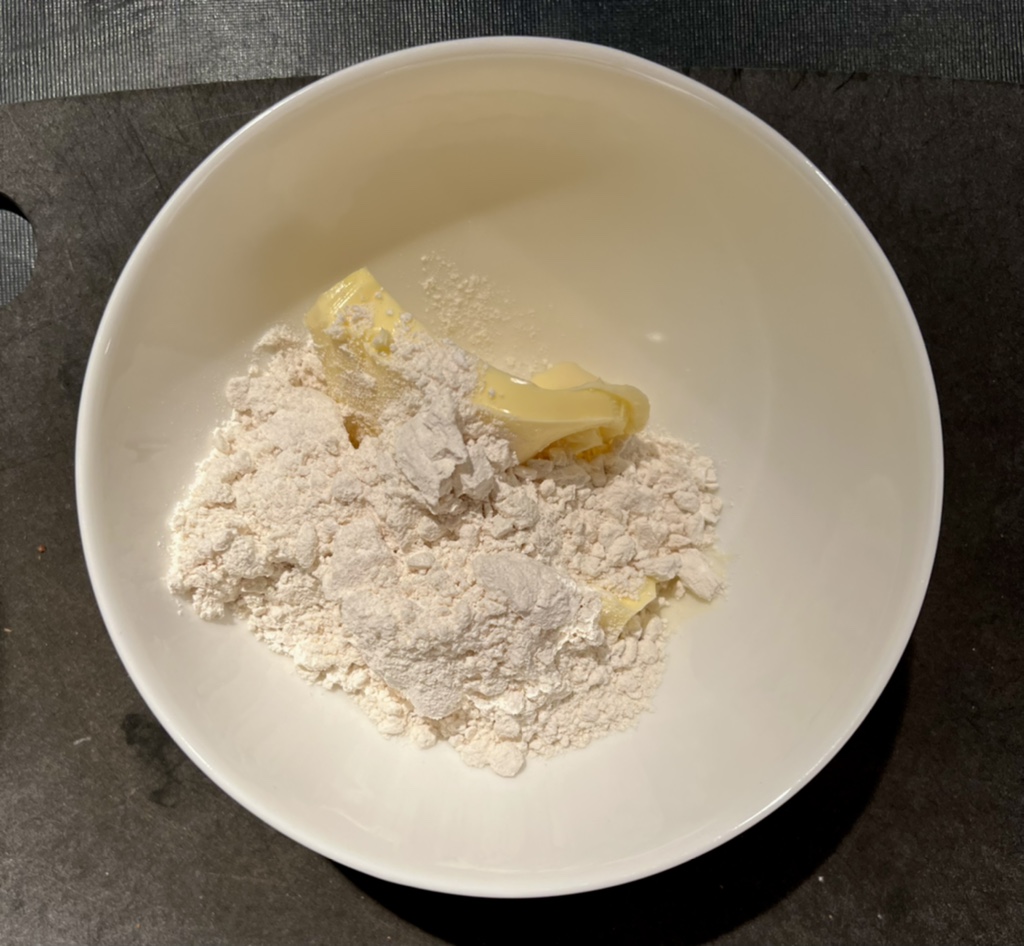
…until we have created a uniform mixture:
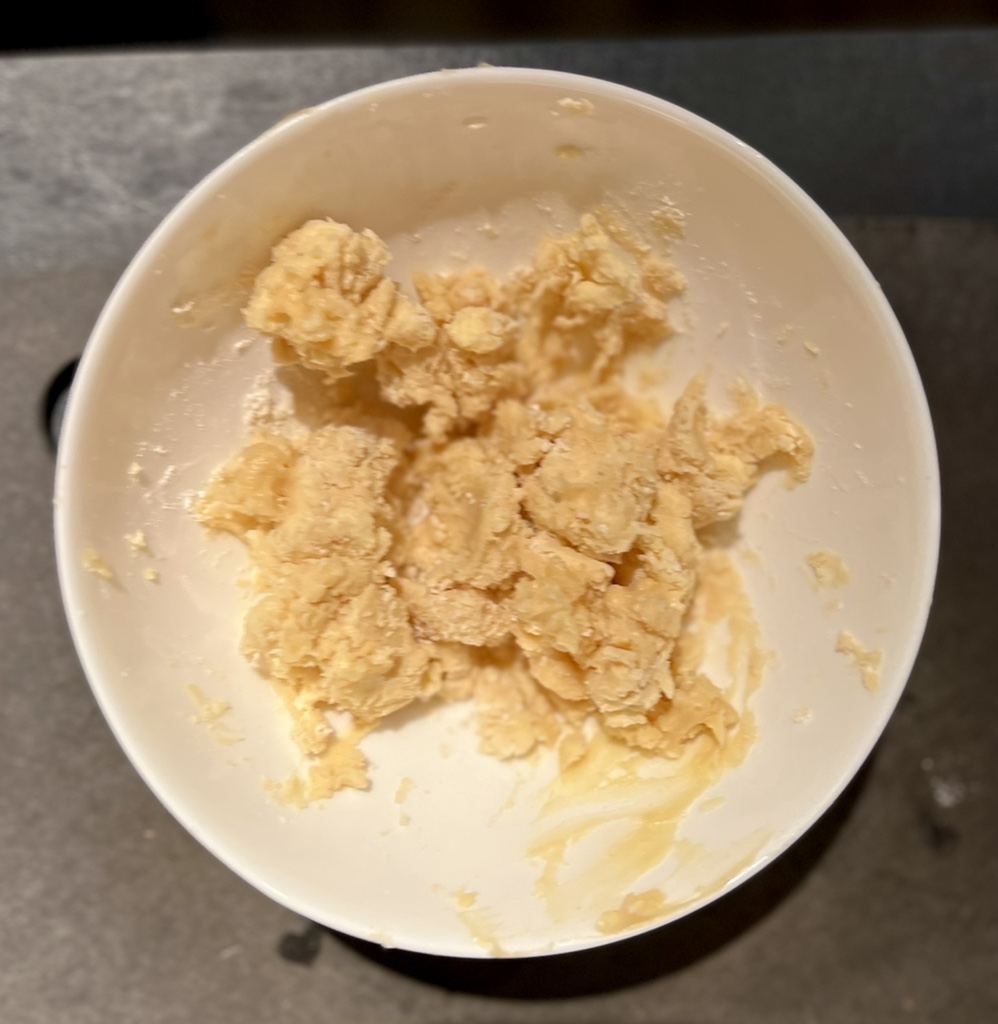
We cut the heads of the mushrooms into quarters or sixths, depending on their size and personal preference.
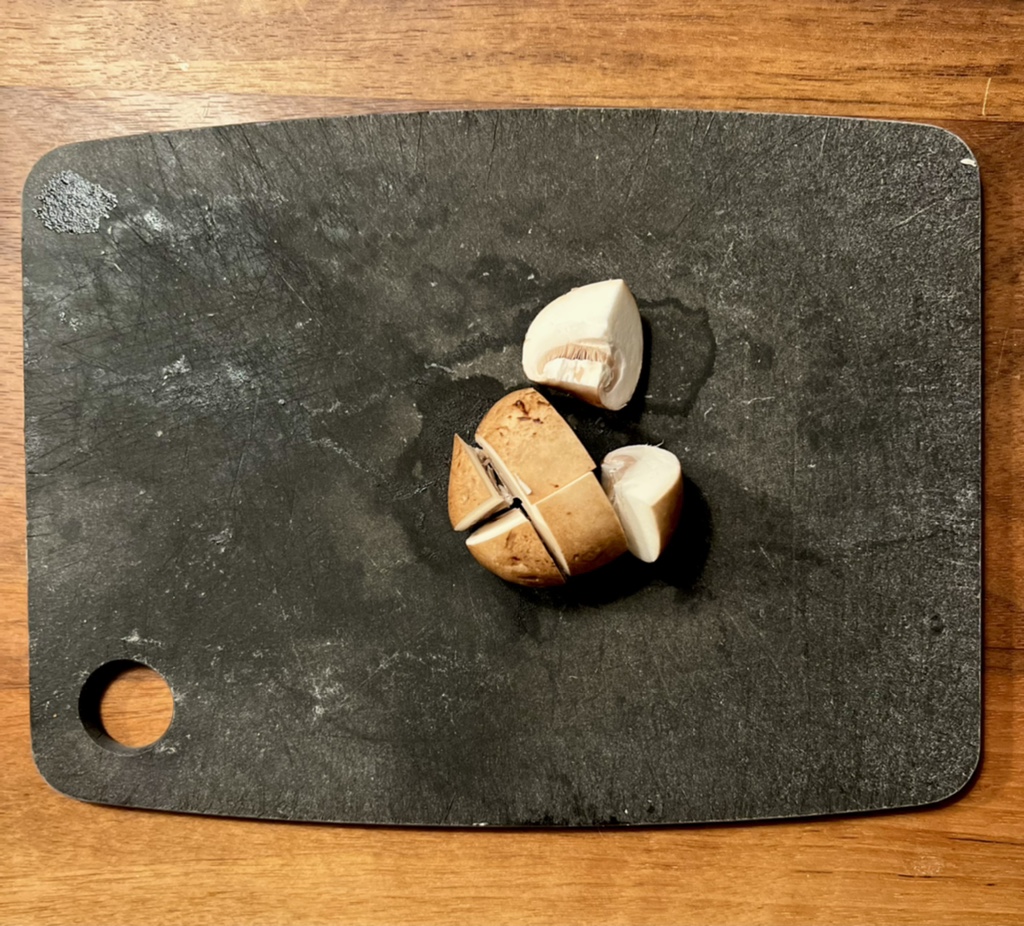
Peel the carrots and cut them into suitably large or small cubes. We use the size of the peas and mushrooms as a reference.
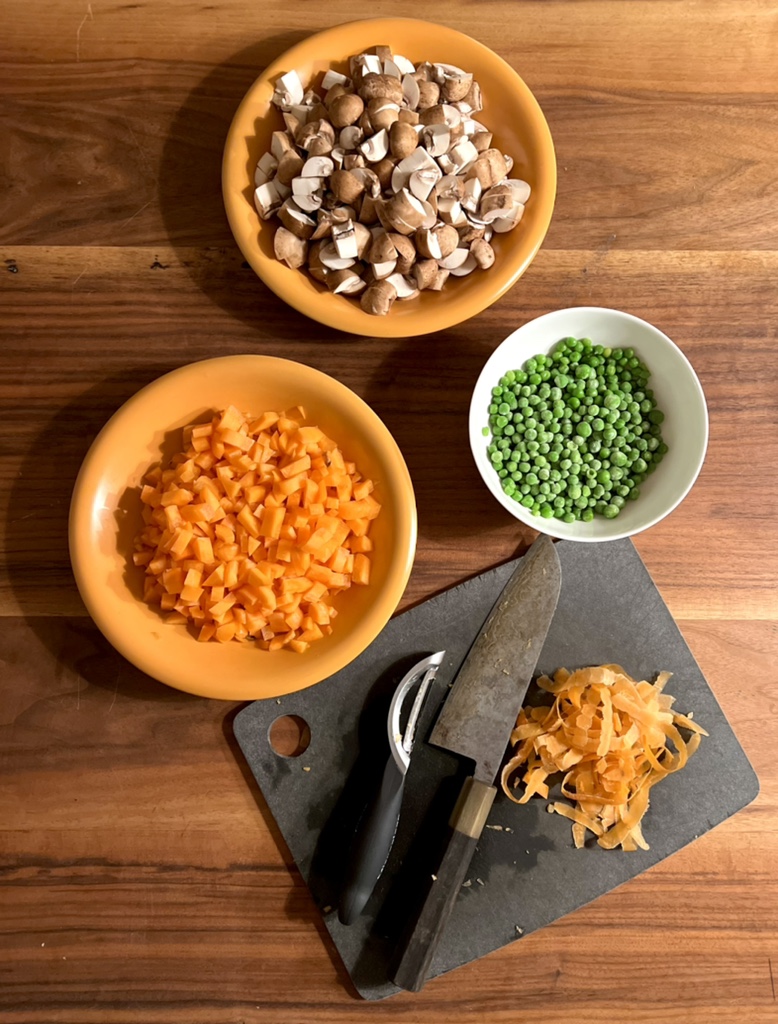
Liberate the parsley from its stems and finely chop the leaves.
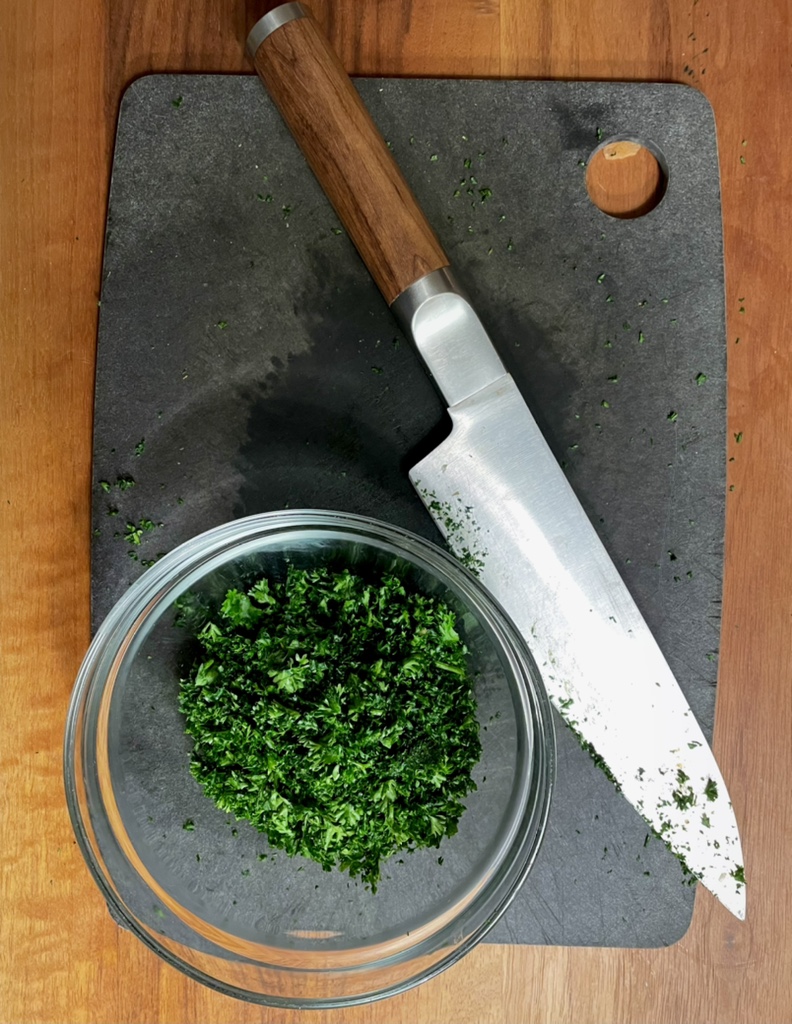
We also cut the now poached and completely white chicken into not too big pieces.
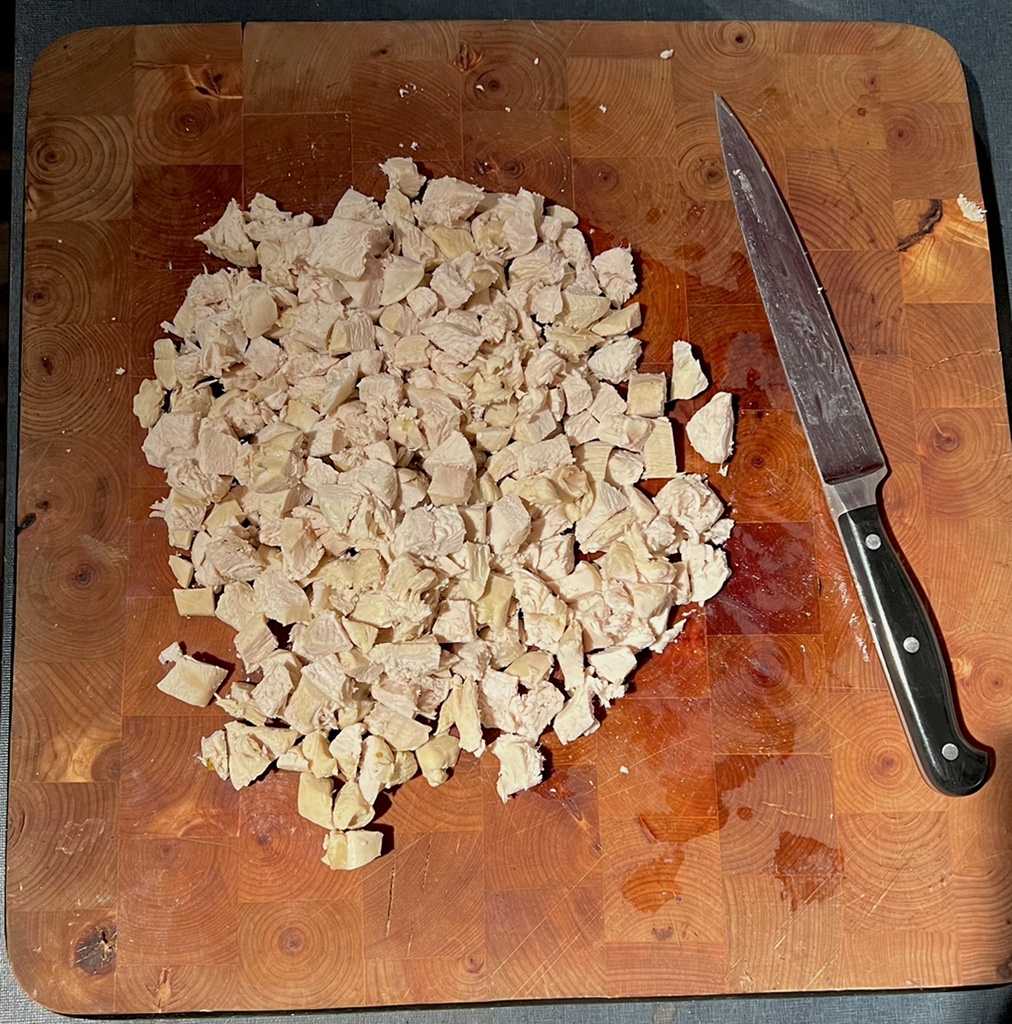
Now for the actual cooking:
We heat a generous portion of butter in a pan. Please, not at full heat, because it should not brown under any circumstances.
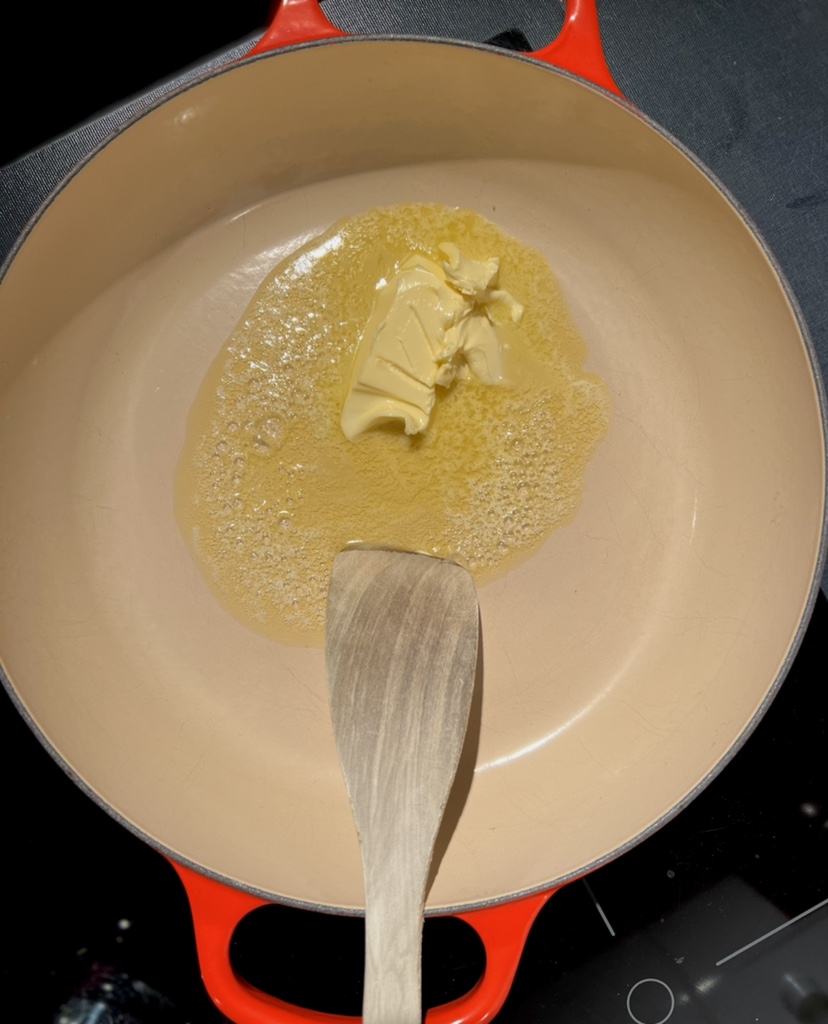
Then we sauté the carrot cubes first, because they need the most time.
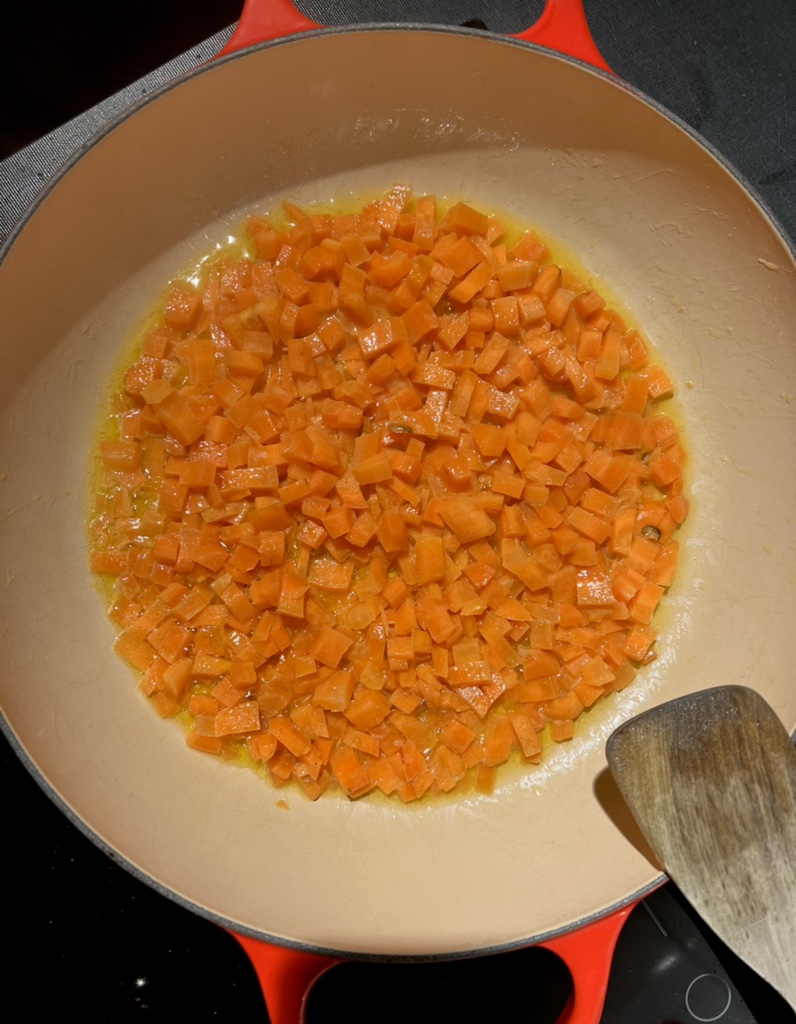
The mushrooms are then added and stirred from time to time.
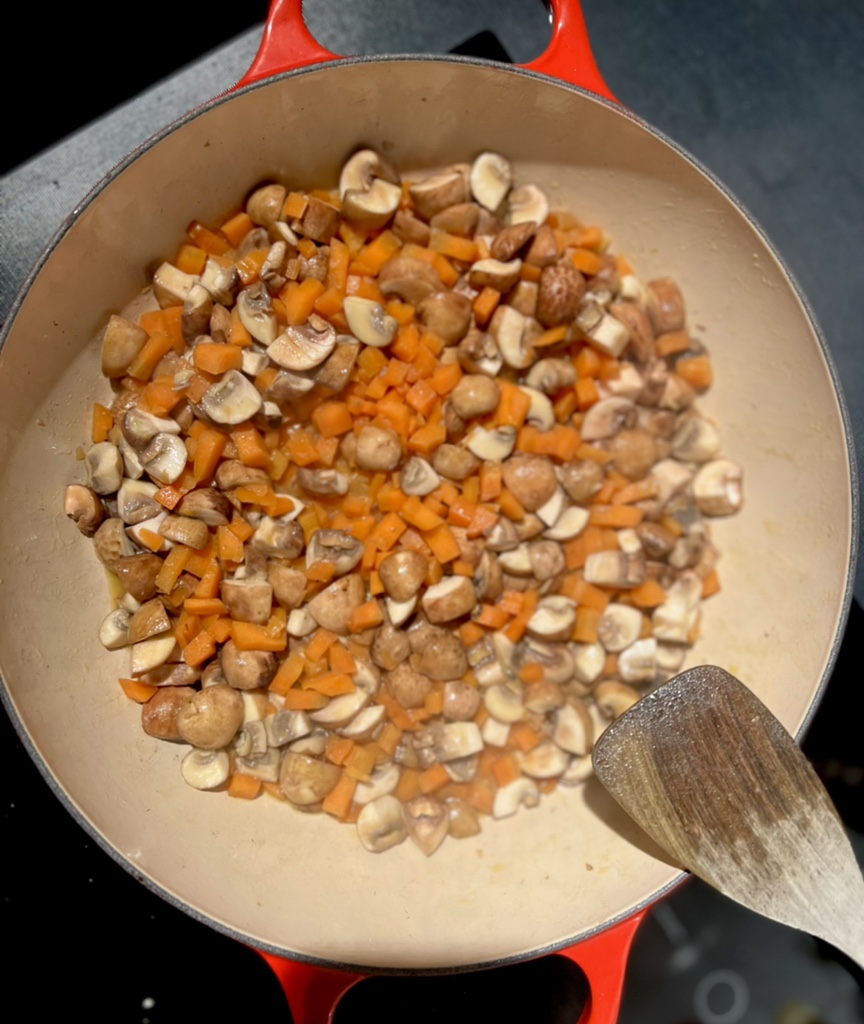
After another 4 – 5 minutes, the mushrooms are also soft and have added their wonderful flavour. We then pour in half a glass of white wine and let the whole thing simmer for another 2 minutes.
We then pour on our broth that we used for poaching, the chicken made it even more intense. We only need just under half of it, the rest can be used wonderfully for other dishes.
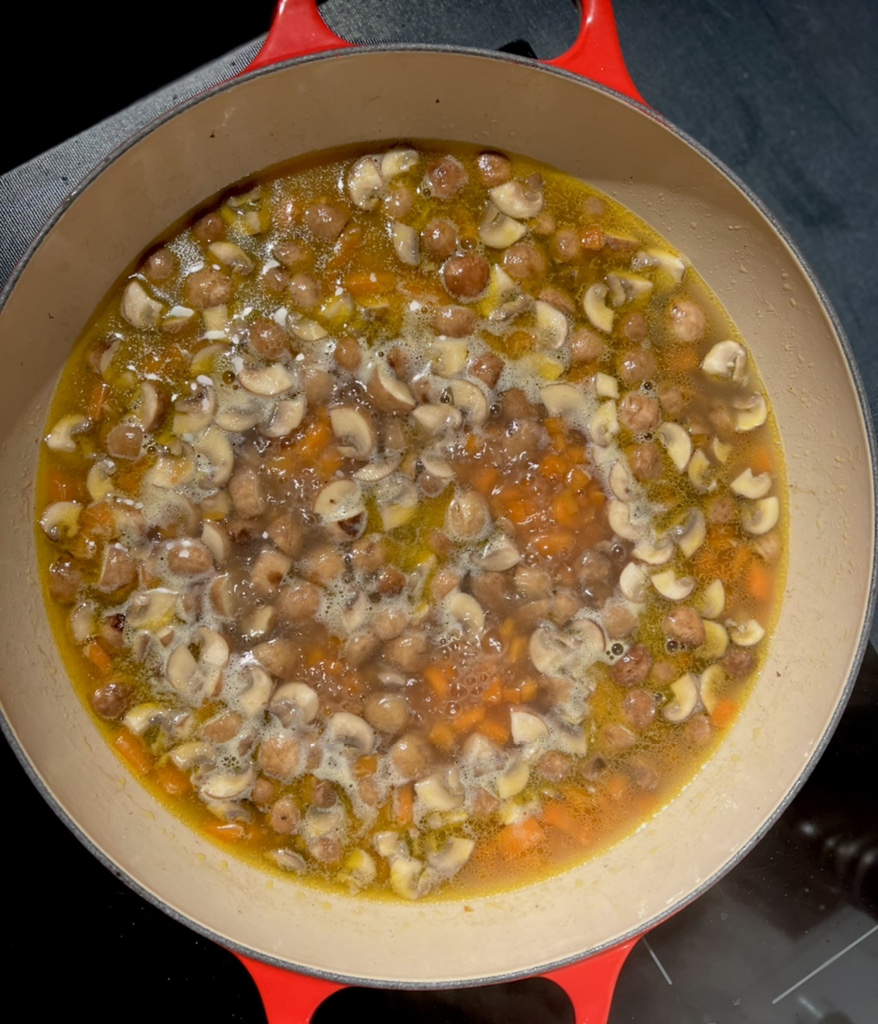
After 2 – 3 minutes of it all coming together, we add sweet cream and a few spices: a little salt to taste, some white or black pepper and a pinch of cayenne, for a little kick in this otherwise very subtle dish. Also the finely grated zest of a third of a lemon.
Worcestershire sauce should not be missing at this point – at least five dashes. It is also very suitable for seasoning later on, in case you should still miss something taste-wise.
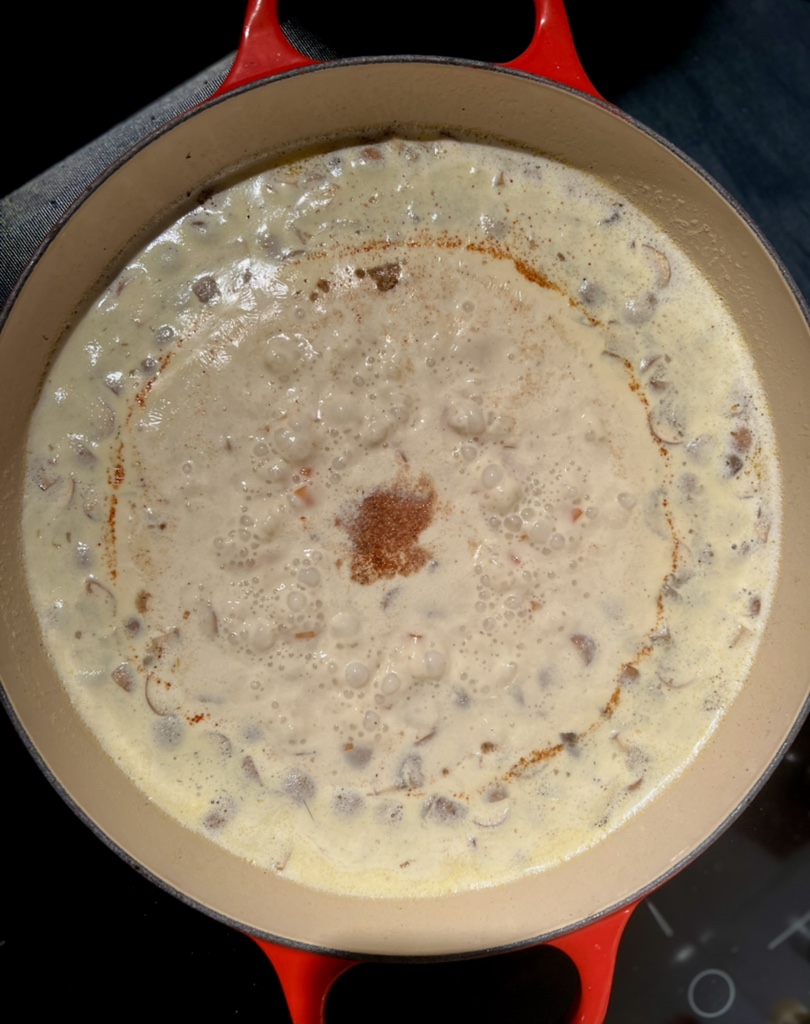
Now the base is ready and the meat can be added. Don’t do this too early, because it is already cooked and should only be gently heated.
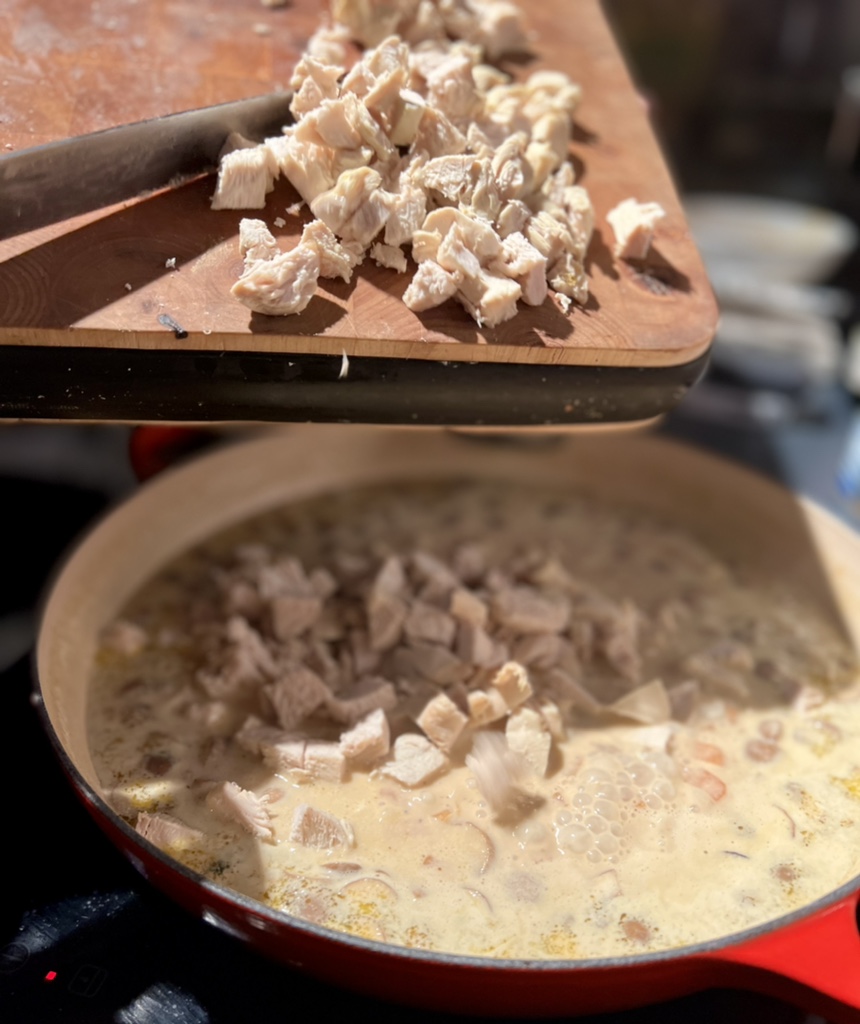
Immediately after the meat, we add small pieces of our kneaded butter to thicken the sauce. Don’t use too much at once, start with half the amount and then work your way up to your desired result. The butter ensures that the flour does not form lumps. The cooked flour binds the sauce after only 1 – 2 minutes of gentle simmering and makes it silky and creamy.
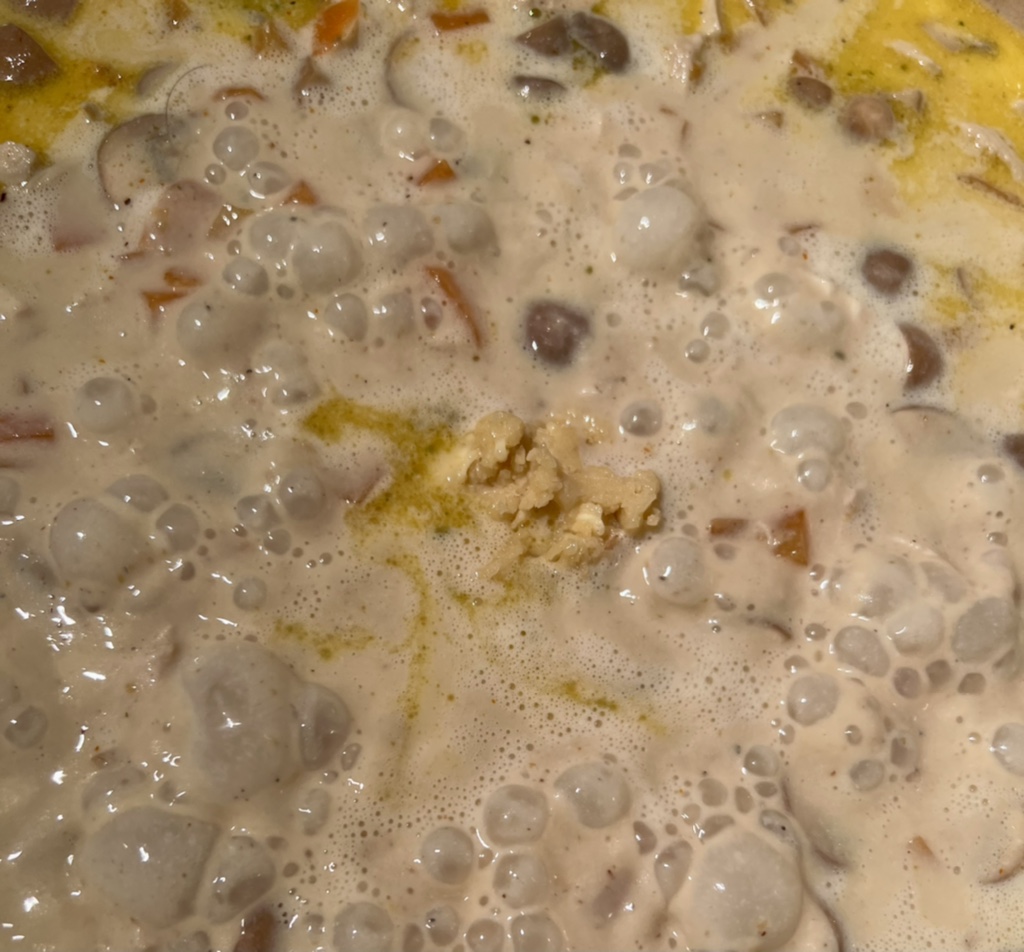
We now add the peas to the thickened sauce, which only need to be warmed.
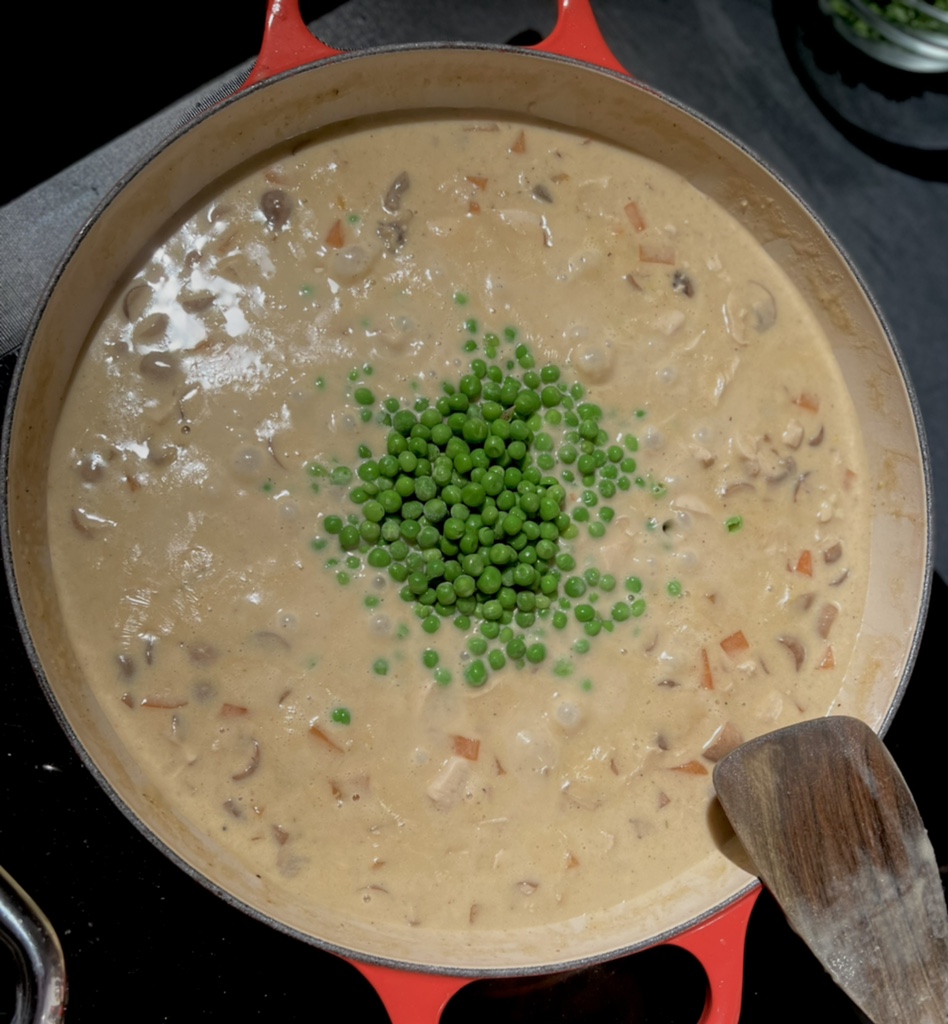
Finally, add parsley to taste.
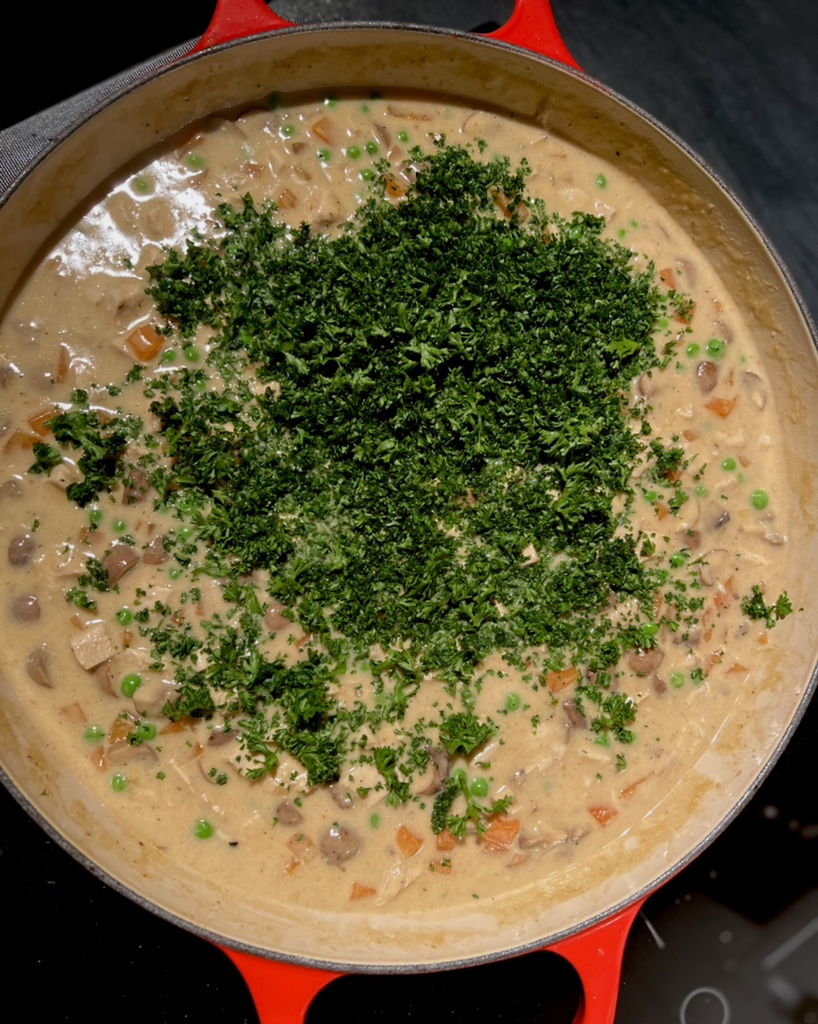
The perfect match for a chicken fricassee is rice, we think.
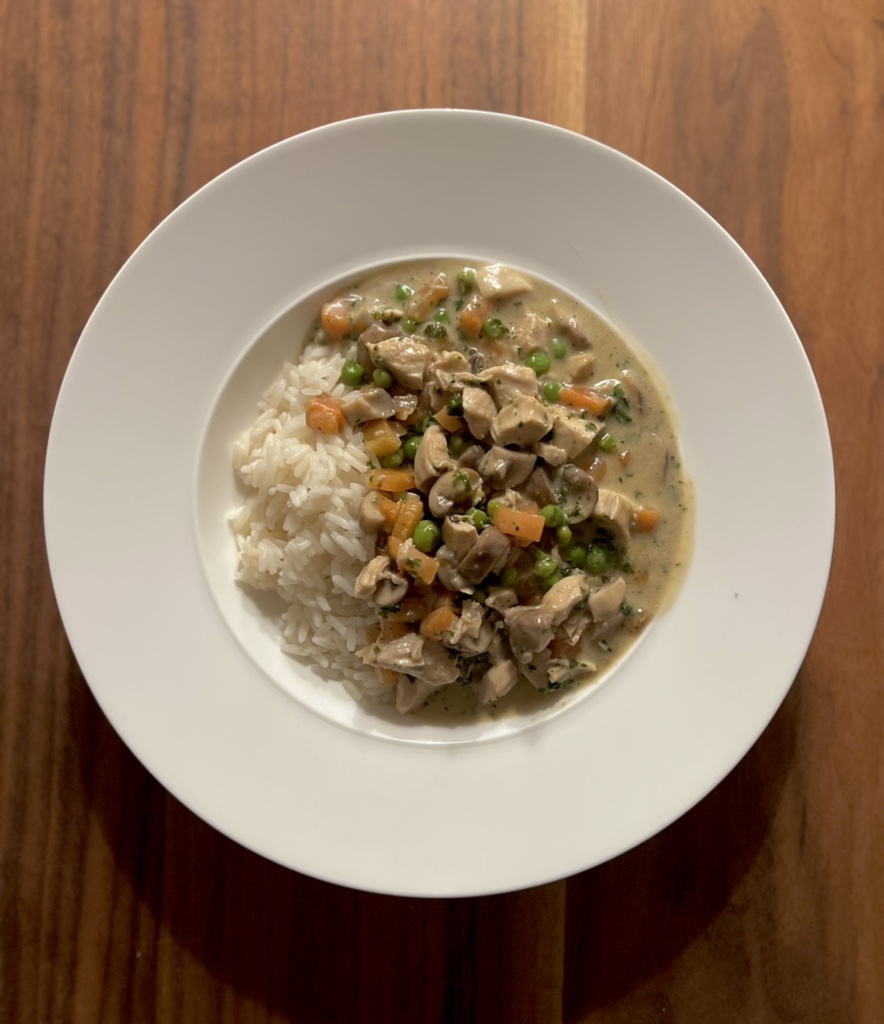
Enjoy.
And may the taste be with you.
Ingredients (for 4 people):
Approx. 600 g chicken breast (please best quality and always organic)
Approx. 700 ml chicken stock (for poaching, only half of it later in the dish)
100 ml white wine
140 ml cream
200 g peas
300 g carrots
300 g mushrooms
1 onion
1 lemon (organic, non-sprayed)
300 g rice (parboiled or to taste)
2 – 3 bay leaves
8 – 10 cloves
Pepper white or black
Cayenne pepper (optional)
Worcestershire sauce
Parsley (curly or flat, to taste)
40 g flour + 40 g butter (for the kneaded butter)
40 – 50 g butter (for frying)
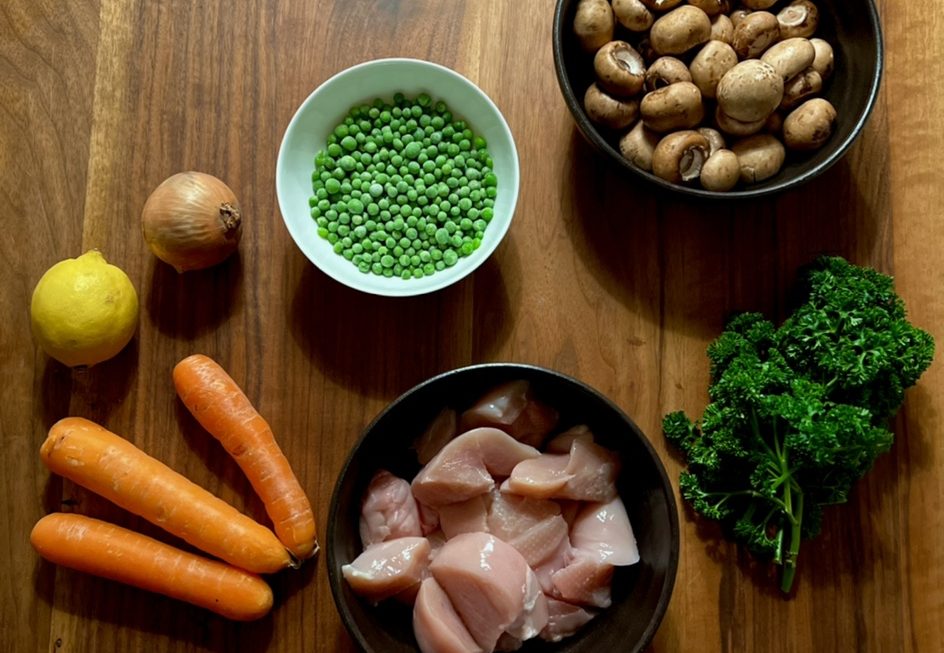

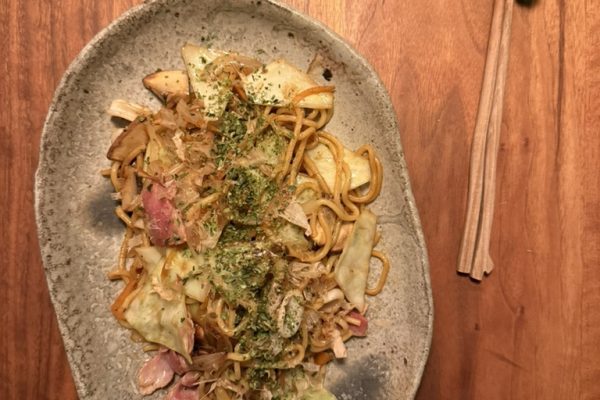
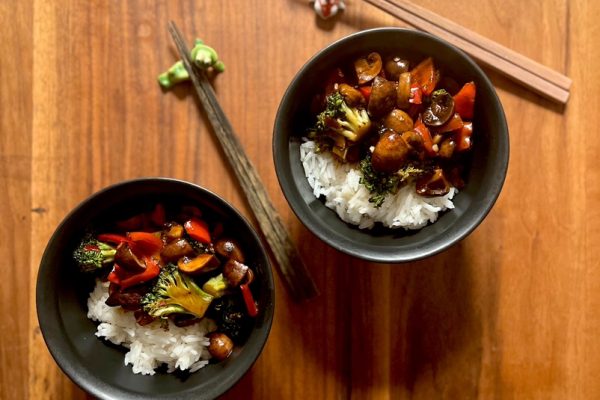
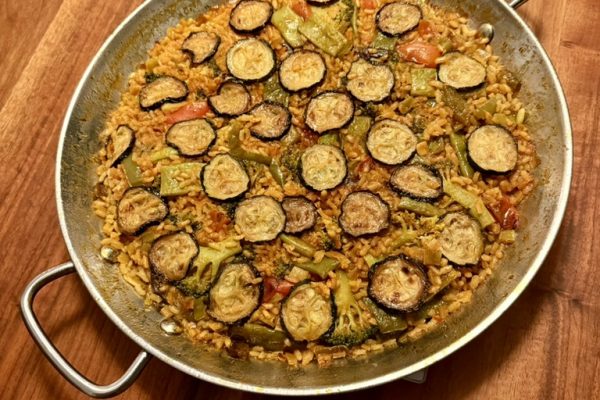

2 thoughts on “Chicken fricassee”